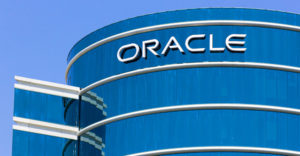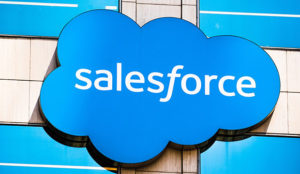
I think I have used this title before, but this is in a whole different context. Also, this is a short piece because I know you are likely out contributing to the leisure economy as you should be. This will be here when you get back. I couldn’t help but make one more comment on the Oracle-Salesforce announcements of last week because I see them as an important watershed.
First, let’s dispel some notions that may or may not be true. Based on these announcements, Marc Benioff is not going to be CEO of Oracle in the future, and Oracle is not buying Salesforce. Both those things could happen, but to read either into the announcements is a bit of a stretch.
Those would have been very important strategic directions, and they could happen, but my read of the situation is that the announcements are far more tactical. Of course, Marc has reminded me many times that tactics dictate strategy. Think about that one.
Gadget Population Boom
To get an idea of my thinking, consider that there will be 50 billion devices on the Internet by 2020, just a few years out. It’s easy to see 50 billion as just another number in the stream that we all swim in daily, but this means more.

By 2020, I doubt there will be 10 billion people on the planet — and I hope that’s right because we don’t have infrastructure, natural resources, and some basics like housing for all of them. So, clearly, we’re talking about a population boom in devices more than in people, and the real interesting question, to put it another way, is this: What kind of devices are these customers going to be?
Answering the device question answers the original question, who is the customer? And it goes a long way toward explaining the Oracle-Salesforce announcements.
Clearly, getting to 50 billion devices will involve many, many nonhuman Internet users. We’re already watching as Salesforce, Oracle, and others ramp up the Internet of things or, as the people at Cisco now put it, “the Internet of everything.”
It’s real too. Salesforce is already talking about its interface with the new Coke machine, with Toyota cars, and with GE aircraft engines — and that’s just scratching the surface. As more devices become smart enough to transmit performance and other data to computers at headquarters, the population of devices on the Internet will swell to the 50 billion projection.
Plug-and-Play World
So who is the customer? It’s your device(s) more than it is you, though you’ll pay the bill. Getting to the 50 billion mark will require significant commoditization and price erosion. Don’t worry — they really will make it up on volume.
Companies that use thousands of devices will go nuts if they have to pay a seat price even approaching that of your iPhone. Given that both Salesforce and Oracle have dogs in this hunt AND that one dominates the front office (that would be Salesforce — see the Gartner CRM Magic Quadrant Reports for 2013) while the other is a major player in ERP, you can deduce a few things.
Also, keep in mind that each vendor has an emerging suite of development tools that will drive the front- and back-office apps of the future.
in a conference call that I participated in the other day, Larry Ellison said that he wanted to be able to provide integration between his back-office and Salesforce’s front-office systems that could be downloaded and installed with the press of a button.
Here I think he’s aiming at Apple’s App Store-like convenience — and likely that of Salesforce’s AppExchange as well — and he’s right too. Business has the same expectation of easy download and operation that individuals have for their personal devices.
That’s especially critical if by 2020 you have an expectation of plugging in a new machine, letting it find the wireless Internet, and then downloading the software it needs to call home. The whole process has to be inexpensive and dead solid easy.
So the competition for the hearts and minds of the 2 to 3 billion humans who can afford computing devices and software today — rising to maybe 5 billion by 2020 — is very small indeed compared to the 50 billion or so devices whose silicon hearts these vendors covet.
That’s all the more reason to bury the hatchet and enter a gentlemen’s agreement on dividing up the market and pursuing the biggest prize we’ve yet seen in computing.
Oracle back office, Salesforce front office — what happens to SAP and Microsoft? This is not over.






















































